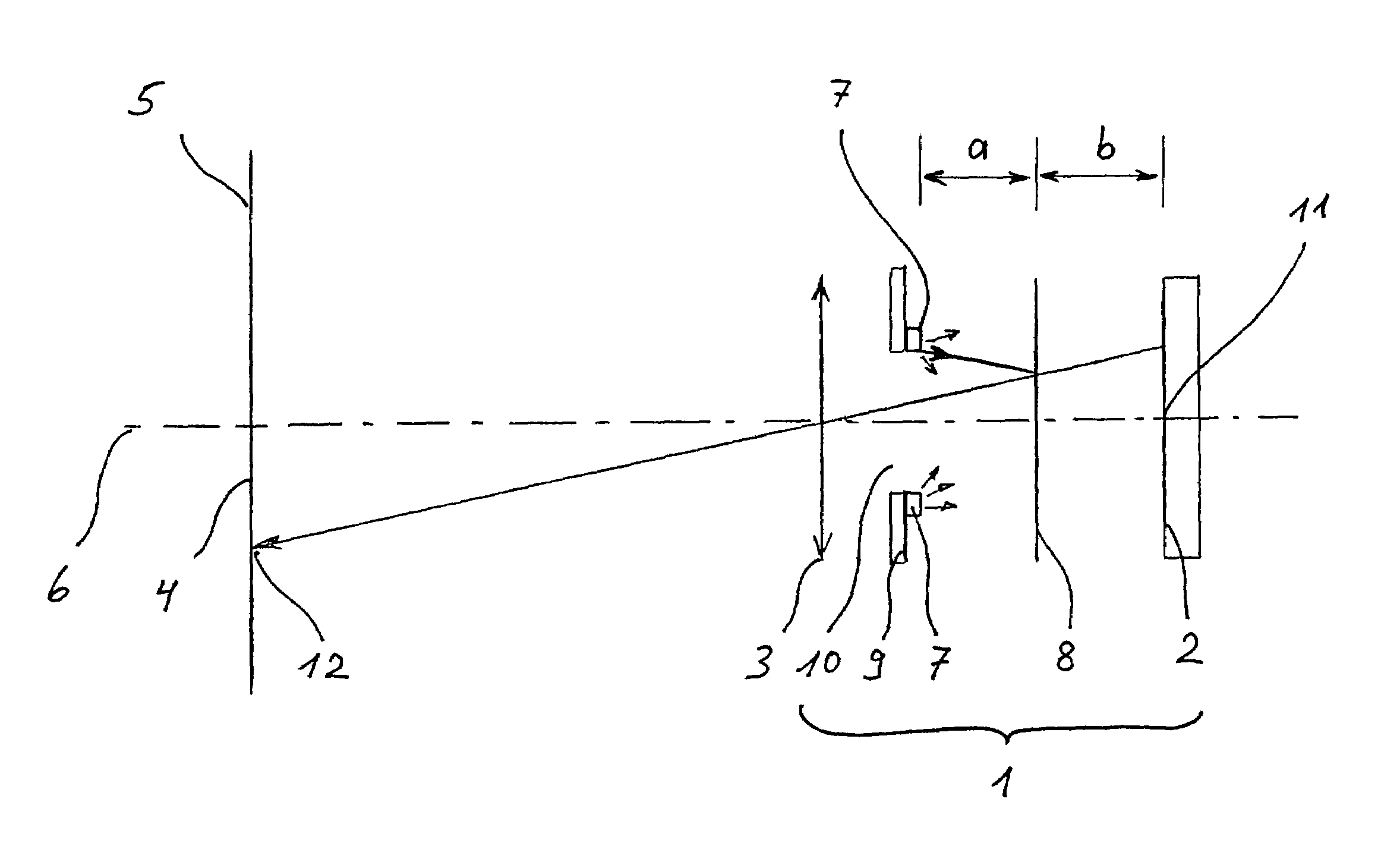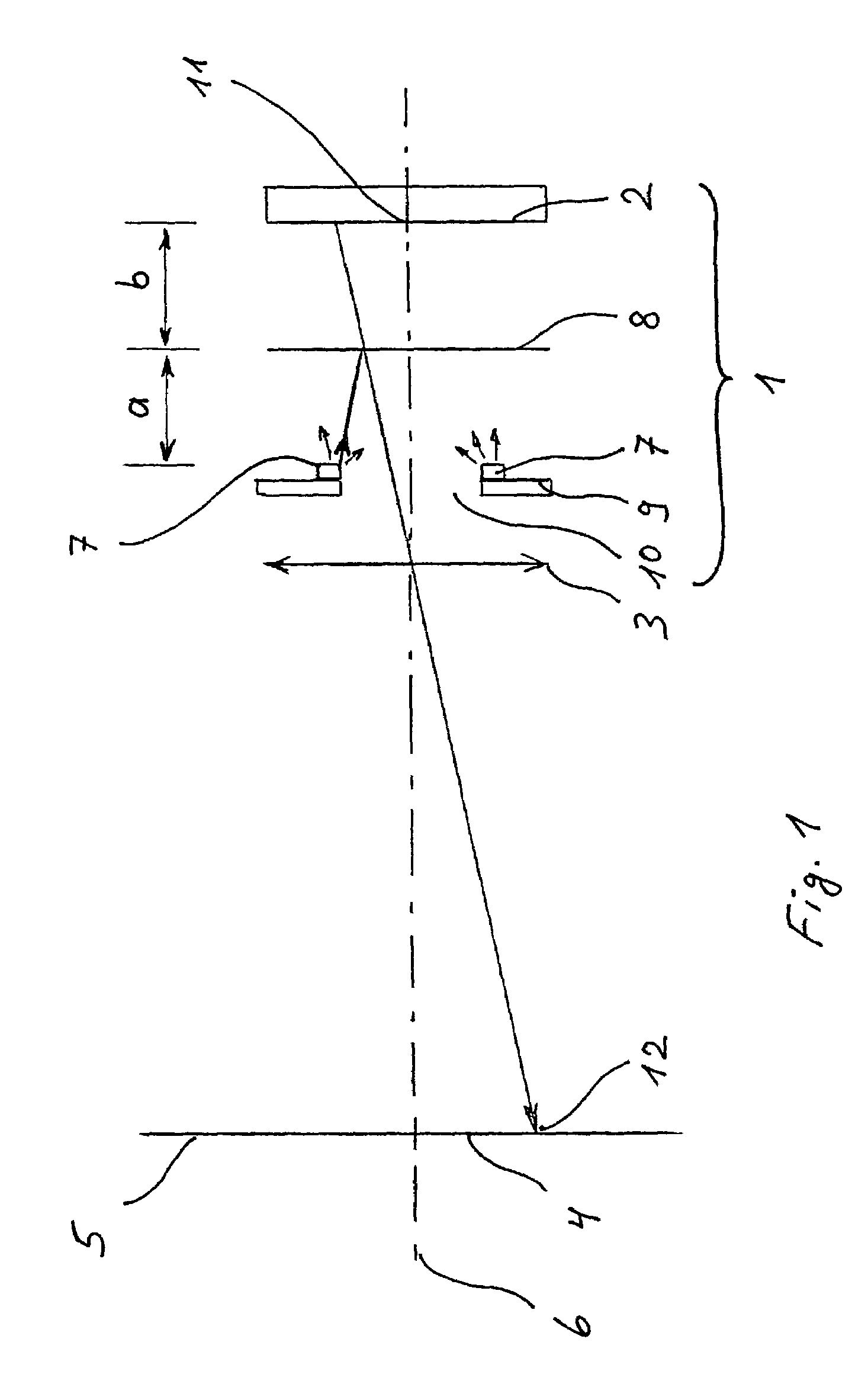Method and device for adjusting a camera
a technology of camera and lens, applied in the field of camera adjustment, can solve the problems of insufficient recognition of image field, inability to adjust camera, and advanced technology of autofocus device, and achieve the effect of less sophisticated and advantages in practical us
- Summary
- Abstract
- Description
- Claims
- Application Information
AI Technical Summary
Benefits of technology
Problems solved by technology
Method used
Image
Examples
Embodiment Construction
[0033]FIG. 1 shows the optical path and the design according to the invention. It comprises a camera 1 with an image sensor 2 and an objective 3 for imaging an object 4 onto the image sensor 2. The object 4 is located in the object plane 5, which can be, during the adjustment, e.g. a white piece of paper. The optic axis 6 is also shown in the optical path.
[0034]The image sensor 2 is, e.g. a unidimensional (line) or bidimensional (matrix) CCD sensor, a CMOS sensor or a photo diode array. All kind of image sensors, i.e. semiconductor sensors, in form of CCD line or CCD matrix, CMOS line or CMOS matrix, photo diode lines or photo diode arrays, camera tubes, CID lines or CID matrix, vidicons, newicons, plumbicons etc., as well as spread individual detectors, i.e. photo diodes, or positions-sensitive detectors, e.g. PSDs, can be considered here. For example, a Hewlett Packard / Agilent HDSC 2000 CMOS sensor can be used.
[0035]For the objective 3, arbitrary optical systems can be used, from ...
PUM
 Login to View More
Login to View More Abstract
Description
Claims
Application Information
 Login to View More
Login to View More - R&D
- Intellectual Property
- Life Sciences
- Materials
- Tech Scout
- Unparalleled Data Quality
- Higher Quality Content
- 60% Fewer Hallucinations
Browse by: Latest US Patents, China's latest patents, Technical Efficacy Thesaurus, Application Domain, Technology Topic, Popular Technical Reports.
© 2025 PatSnap. All rights reserved.Legal|Privacy policy|Modern Slavery Act Transparency Statement|Sitemap|About US| Contact US: help@patsnap.com



